Top inventions and technical innovations of World War 2
Much of the technology we take for granted today was developed in the Second World War and helped shape the world today
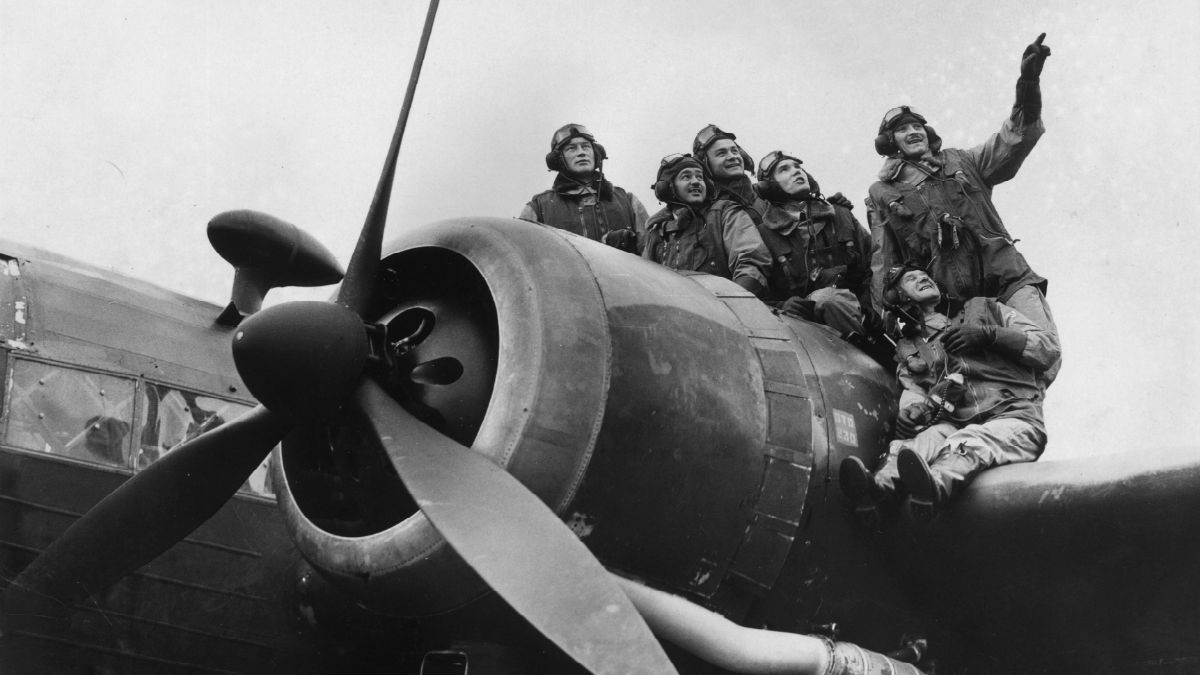
4. The V-2
Hitler's second Vergeltungswaffe, or Vengeance Weapon, may have killed over 2,500 people (and 20,000 more died in the process of making it) but it was a key step forward in putting a flag on the moon, as well as developing GPS, Google Earth and satellite communications. While the V-1 was a relatively crude guided missile, the V-2 was an astonishingly advanced weapon. The world's first intercontinental ballistic missile had a range of 200-225 miles, reached an altitude of up to 60 miles and could strike London just three minutes after its launch in Holland.
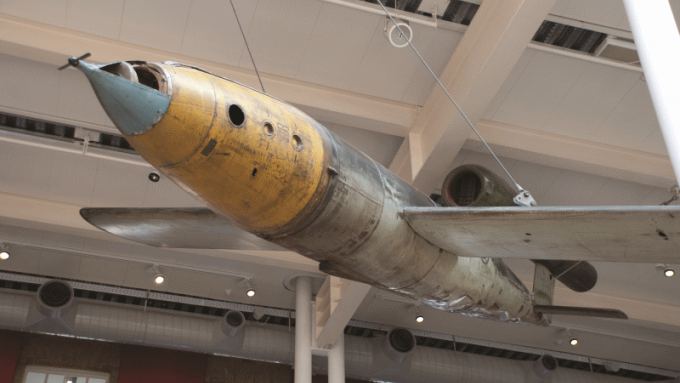
^ The V-1 was a relatively crude guided missile that was often destroyed before causing any damage
The V-2 is the ancestor of all modern rockets, and is related to the vehicles that launched Sputnik and put the first American in space - the Soviet R-7 and US Mercury-Redstone. This was no accident; after the war both the US and Russia appropriated V-2 missiles and related equipment, and both powers hired former V-2 engineers to help with their missile programs. Although rockets had been used in warfare for hundreds of years, traditional solid fuel didn't have the energy density needed to propel a vehicle for hundreds of miles, and made it impossible to throttle the thrust. Rockets were also far too inaccurate to hit a target on another landmass. The V2 counteracted this with two major innovations: liquid propellant and inertial navigation.
The Week
Escape your echo chamber. Get the facts behind the news, plus analysis from multiple perspectives.

Sign up for The Week's Free Newsletters
From our morning news briefing to a weekly Good News Newsletter, get the best of The Week delivered directly to your inbox.
From our morning news briefing to a weekly Good News Newsletter, get the best of The Week delivered directly to your inbox.
Fuelling the rocket
Even before war broke out there was keen interest in using liquid fuels to launch rockets in both Europe and the United States. An American, Robert H. Goddard, launched the first liquid-fuelled rocket in March 1926, and in Germany in 1929 Austro-Hungarian scientist Hermann Oberth successfully fired a liquid-fuelled rocket engine.
Oberth's assistant at the test firing was Walther von Braun, who went on to head up the German army's rocket research. By December 1934, at the Kummersdorf proving grounds near Berlin, von Braun had his first successful test firing - a small, 1.6-metre long 'A-2' rocket, which burnt a mixture of alcohol and liquid oxygen to reach a height of 2.2 miles. Two years later the research centre was moved to the island of Peenemünde, on Germany's coast to the south of Sweden, where testing began on A-3 and A-5 rockets - test beds for components to be used on the proposed A-4 model, which would become the V-2 ballistic missile.
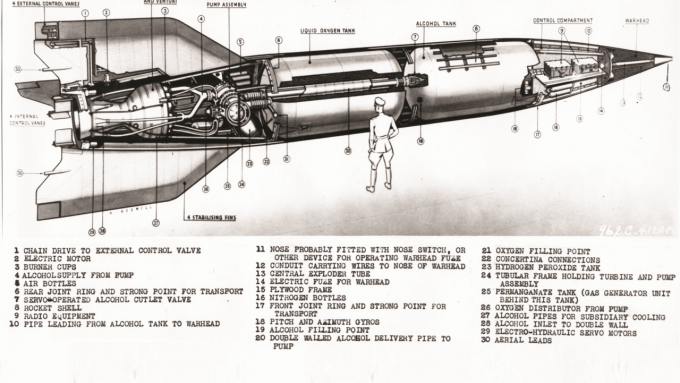
^ This U.S Army cutaway of the V-2 shows the large oxygen and alcohol tanks, as well as the turbine which forces the mix into the combustion chamber - click to enlarge
One of the main problems faced by the scientists was generating enough thrust to lift a rocket as large and heavy as the V-2 into space. The A-2 rocket generated 300 kilograms of thrust, but the V-2 needed 25,000. To get the required thrust a way was needed to a sufficient flow of fuel to the combustion chamber to maintain the speed of the reaction and so generate enough power. The V-2's final engine used twin gas turbine-powered pumps to push vast amounts of an ethanol/water solution plus liquid oxygen into a combustion chamber, where they mixed and ignited to produce a huge amount of thrust. This alcohol/oxygen mix continued to be used well after the war - the US Army's PGM-11 Redstone rocket used the same fuel configuration and stayed in use until 1964, while a retired Redstone rocket launched Australia's first satellite - WRESAT - in 1967.
A free daily email with the biggest news stories of the day – and the best features from TheWeek.com
Even though von Braun's military backers ensured liquid-engined rockets were developed far faster and to a more advanced degree than Robert Goddard managed in the States, von Braun was in no doubt as to the debt he owed the American. While at NASA in the 60s he stated that Goddard's early rockets "blazed the trail and incorporated many features used in our most modern rockets and space vehicles".
Control systems
Even with von Braun and his team managing to get the V-2 to generate enough thrust to escape the atmosphere, they also needed a way to keep the missile on course during the thrust phase, so that when the engine was cut off the missile was at the correct angle and speed to hit its target. Once the engine cut off, after around 60 seconds of thrust and 50 miles above the Earth, it behaved like an artillery shell - falling in a curve to its target at three times the speed of sound.
Most V-2s guided themselves to their target, relying on internal instruments to determine the rocket's current flight path and speed - unlike modern rockets, the V-2 sent little information back to the ground, so once it was launched it was largely on its own. To maintain a flight path, the V-2 needed to measure pitch, yaw and roll. It also needed to know when it was accelerating at the correct rate, at which point it would shut off the engine.
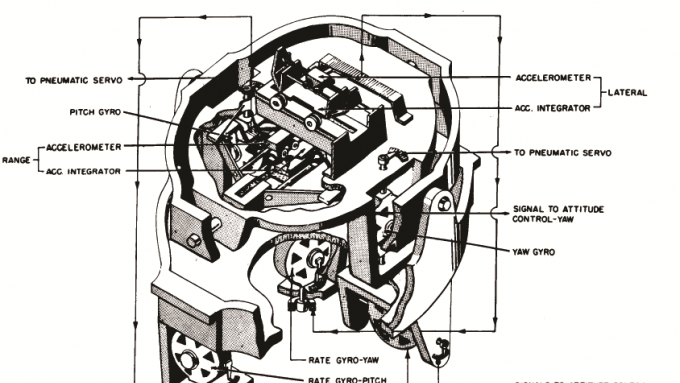
^ An early internal guidance system used in the A-3 development rocket. It proved too unstable leading to every A-3 launch crashing after takeoff
To maintain the right direction, the V-2 used a navigation system with two gyroscopes - one mounted horizontally and one vertically. Mounted on gimbals, the gyroscopes would stay in their original orientation, no matter how the rocket moved. As the gyroscopes maintained an absolute position, the system was able to measure the rocket's movement around them, and so determine how much it had moved. To correct the rocket's course the gyroscopes controlled a combination of air vanes mounted on the rocket's fins, and, because air vanes are no good once you run out of atmosphere, vanes were also mounted on the edge of the rocket booster to control the direction of the rocket's exhaust. This guidance system was known as the LEV-3.
Two methods were used to determine when to cut off the rocket motor. The first successful launch of the V-2 rocket, in October 1942, used a Doppler radio beam to measure acceleration from the ground, but there were worries that the Allies could jam or interfere with the beam and sabotage the launch. For this reason, most V-2s used an accelerometer to determine when the engine should be shut off - by which point the V-2 would be travelling at 1,341 metres per second.
The guidance was reasonably accurate, and certainly good enough to hit a target the size of London. That the USA's Mercury-Redstone rockets, which put the first chimpanzee and the first American, Alan Shepard, into space, used the same LEV-3 guidance system as the V2 is testament to its accuracy. This system is also the basis of today's inertial navigation systems, which keep everything from aircraft to submarines to guided missiles on track.
The reason more Londoners weren't killed by Hitler's ultimate weapon lies partly in a British disinformation campaign; double agents reported back to Germany that rockets were overshooting London by 10-20 miles. Once the rockets were recalibrated accordingly, many landed in the relatively sparse areas South-East of London - the last V2 fired landed in Orpington, Kent on 27th March 1945.
Without Germany's rapid development of the V2 rocket, the rush to develop an intercontinental ballistic missile in the post-war years may never have been so intense. The leap forward that the pressures of war put upon the Axis and Allies development programmes put us decades ahead of where we would otherwise be when it comes to everyday technologies such as satellite communications.
3. Jet engines
Although Sir Frank Whittle had his first jet engine working in 1937, the British government wasn't particularly interested in it and work progressed slowly. It was the Germans who really pushed the technology, with the Messerschmitt Me 262 being the first jet-powered fighter aircraft. Compared to the propeller-powered fighters of the day, the Me 262 was a far superior plane and considerably faster. It was introduced in 1944, and its pilots claimed a 5:1 ratio of allied planes shot down to Me 262s lost.
The Germans also produced the Arado Ar 234, which was the first jet-powered bomber and the last Nazi plane to fly over England in April 1945. Although it saw little service, its speed made it practically impossible to intercept. Jet engine research continued, and the Heinkel He 162 single-engined jet fighter was produced towards to the end of the war. Fortunately for the Allies, fuel shortages dramatically reduced the impact of the Germany's jet aircraft.
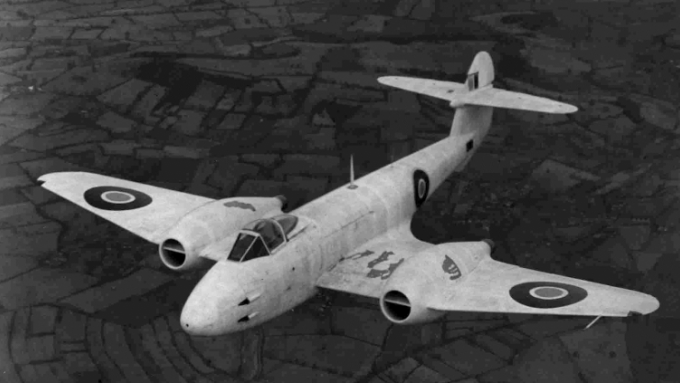
^ The Gloster Meteor was the only British jet plane to see action during the war CROWN COPYRIGHT, RAF MUSEUM: Crown copyright material is reproduced with the permission of the controller of Her Majesty's Stationery Office
Meanwhile the British worked on its own jet fighter, the Gloster Meteor. Starting operations in July 1944, it was primarily used to shoot down V-1 flying bombs. Once that threat was over, the Meteor was banned from flying over Germany for fear one would be shot down and salvaged by the Germans. By the end of the war, the propeller planes that fought in it were no match for the jet engine models invented during it. The age of the jet engine, which continues today, had begun.
-
 Political cartoons for December 14
Political cartoons for December 14Cartoons Sunday's political cartoons include a new White House flag, Venezuela negotiations, and more
-
 Heavenly spectacle in the wilds of Canada
Heavenly spectacle in the wilds of CanadaThe Week Recommends ‘Mind-bending’ outpost for spotting animals – and the northern lights
-
 Facial recognition: a revolution in policing
Facial recognition: a revolution in policingTalking Point All 43 police forces in England and Wales are set to be granted access, with those against calling for increasing safeguards on the technology